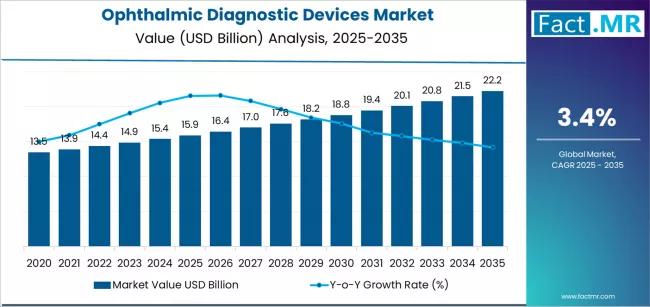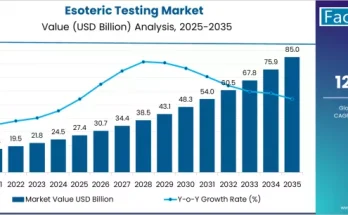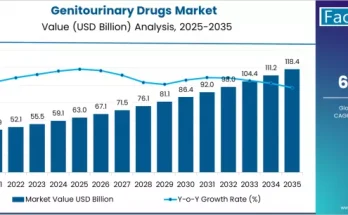The global landscape of eye care is undergoing a transformative shift, driven by rising awareness of ocular health, increasing incidence of vision disorders, and rapid technological advancements. As a result, the ophthalmic diagnostic devices market is experiencing a significant upward trajectory. These devices play a foundational role in early detection, precise diagnosis, and effective monitoring of eye diseases, ensuring that patients receive timely intervention and personalized treatment. With innovations unfolding at a rapid pace and demand rising from both clinical settings and research institutions, the market is poised to shape the future of modern ophthalmology.
Market Overview
Ophthalmic diagnostic devices encompass a broad range of advanced instruments designed to assess visual function, detect abnormalities, and support clinical decision-making. They include optical coherence tomography (OCT) systems, fundus cameras, slit lamps, tonometers, ultrasound imaging tools, and corneal topographers. Each device offers critical insights into different components of the eye, helping specialists manage disorders such as glaucoma, cataracts, diabetic retinopathy, macular degeneration, refractive errors, and corneal diseases.
The increasing integration of digital platforms and smart technologies has strengthened the capability of these devices. AI-driven imaging, cloud-based data storage, automated reporting, and portable diagnostic tools are redefining how ophthalmologists deliver care, especially in remote and underserved regions. Furthermore, the shift toward patient-centric healthcare and precision diagnostics has amplified the need for highly accurate and efficient ophthalmic tools.
Regional Insights
The adoption of ophthalmic diagnostic devices varies across global regions, influenced by healthcare infrastructure, patient awareness, and technological readiness.
North America remains at the forefront due to strong investment in medical technology, widespread availability of advanced diagnostic centers, and an aging population more susceptible to chronic eye diseases. Clinics and hospitals in the region are quick to adopt digital and AI-enabled diagnostic solutions.
Europe closely follows with its robust regulatory framework and increasing emphasis on early detection programs. Numerous eye health initiatives, public screening programs, and technological collaborations continue to push the market forward.
Asia-Pacific, however, is emerging as a powerful growth hub. Rising healthcare expenditure, expanding ophthalmic networks, and a large population with unmet medical needs contribute to significant demand. In addition, technological adoption is accelerating rapidly as regional manufacturers introduce cost-effective yet advanced solutions.
Latin America and the Middle East & Africa are experiencing gradual improvements, with the expansion of private healthcare facilities and increased awareness influencing demand for diagnostic equipment.
Key Trends & Forecast
As ophthalmology enters a new era of innovation, several key trends are reshaping the dynamics of the diagnostic devices market:
Growing Focus on Early Detection and Preventive Care
With eye diseases becoming more prevalent across age groups, healthcare systems worldwide are shifting toward preventive care. Advanced screening tools and portable diagnostic devices are helping detect conditions at earlier stages, reducing long-term treatment costs and minimizing complications.
Rise of AI and Machine Learning in Eye Imaging
Artificial intelligence has become a transformative force in diagnostics. AI-powered algorithms can detect abnormalities in retinal images, predict disease progression, and support clinical decisions with remarkable precision. This integration not only improves diagnostic accuracy but also speeds up workflow efficiency.
Increasing Demand for Non-Invasive and High-Precision Devices
Patients and clinicians continue to prefer non-invasive tools that offer rapid assessments. OCT systems, digital fundus cameras, and advanced tonometers are gaining popularity due to their high precision, enhanced imaging clarity, and improved patient comfort.
Expansion of Tele-Ophthalmology
The rise of telemedicine has extended into eye care, enabling remote consultations, digital imaging assessments, and virtual monitoring. Tele-ophthalmology platforms, combined with portable diagnostic devices, are helping bridge the gap between urban specialists and rural populations.
R&D Innovations and Product Upgrades
Manufacturers are heavily investing in research and development to introduce devices with enhanced imaging depth, automated features, and AI-integration. Additionally, companies are focusing on ergonomic designs, handheld models, and cloud-compatible technologies to meet the evolving demands of modern practices.
Applications & End-Use Outlook
The ophthalmic diagnostic devices market serves various segments across the eye care ecosystem:
- Hospitals and clinics form the core demand base, relying on advanced diagnostic tools for daily examinations and treatment planning.
- Specialty ophthalmic centers require high-precision instruments for comprehensive imaging, surgical preparation, and advanced disease management.
- Ambulatory surgical centers (ASCs) utilize compact and efficient diagnostic devices to enhance workflow and patient throughput.
- Research laboratories and academic institutions depend on specialized ophthalmic equipment for innovations in vision science and clinical studies.
- Home-based and remote care setups are increasingly adopting portable devices to support continuous monitoring.
Each application area emphasizes accuracy, efficiency, and early disease detection, driving continuous advancements in device capabilities.
Conclusion
The ophthalmic diagnostic devices market is on a robust growth path, fueled by technological innovation, rising patient awareness, and the increasing global burden of eye diseases. As healthcare systems prioritize early detection and precision care, the demand for advanced, AI-enabled, and user-friendly diagnostic solutions will continue to rise. Organizations, eye-care professionals, and healthcare policymakers can benefit greatly from in-depth market insights, enabling them to adopt the right strategies and invest in cutting-edge technologies that strengthen the future of eye health.
Browse Full Report – https://www.factmr.com/report/ophthalmic-diagnostic-devices-market



